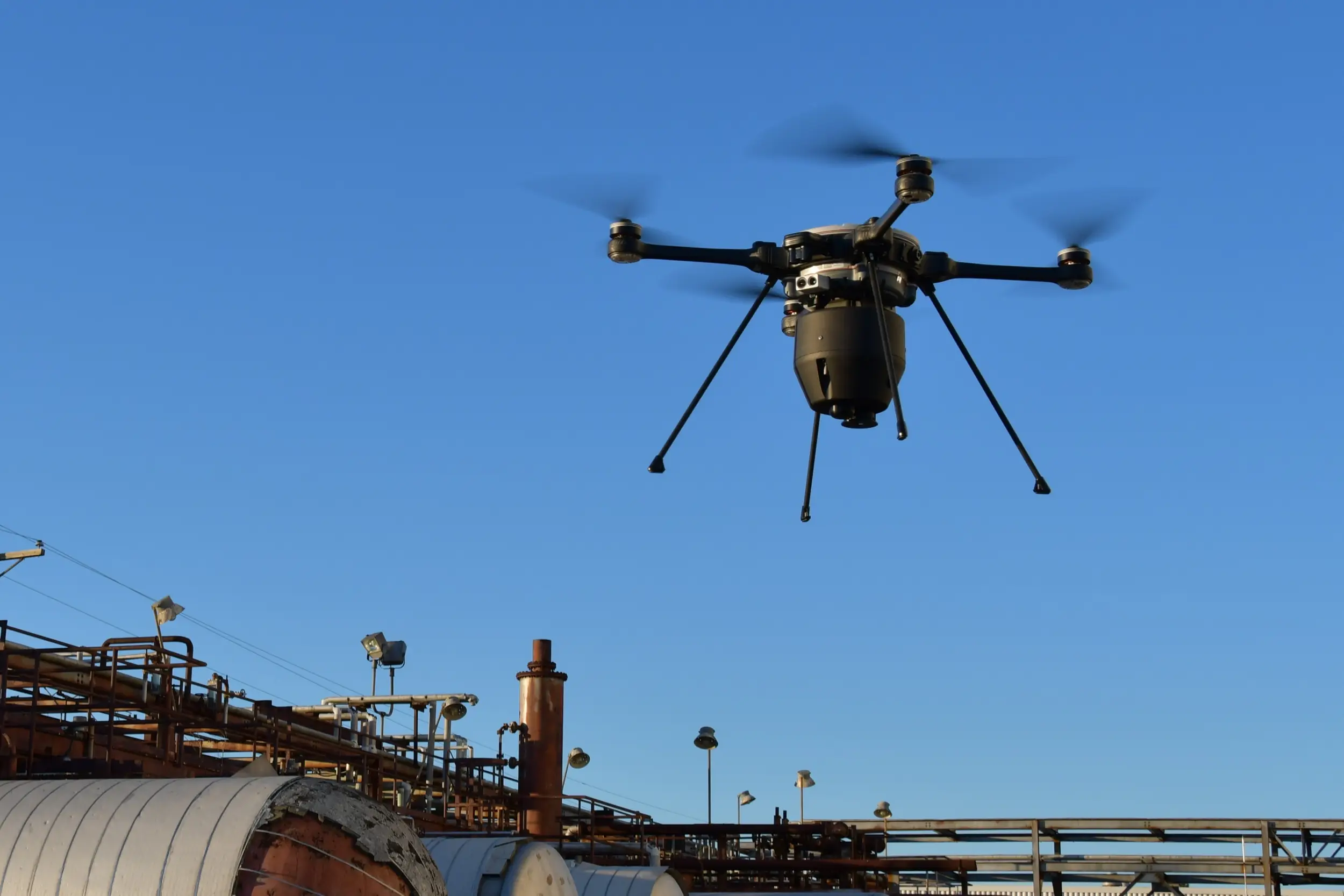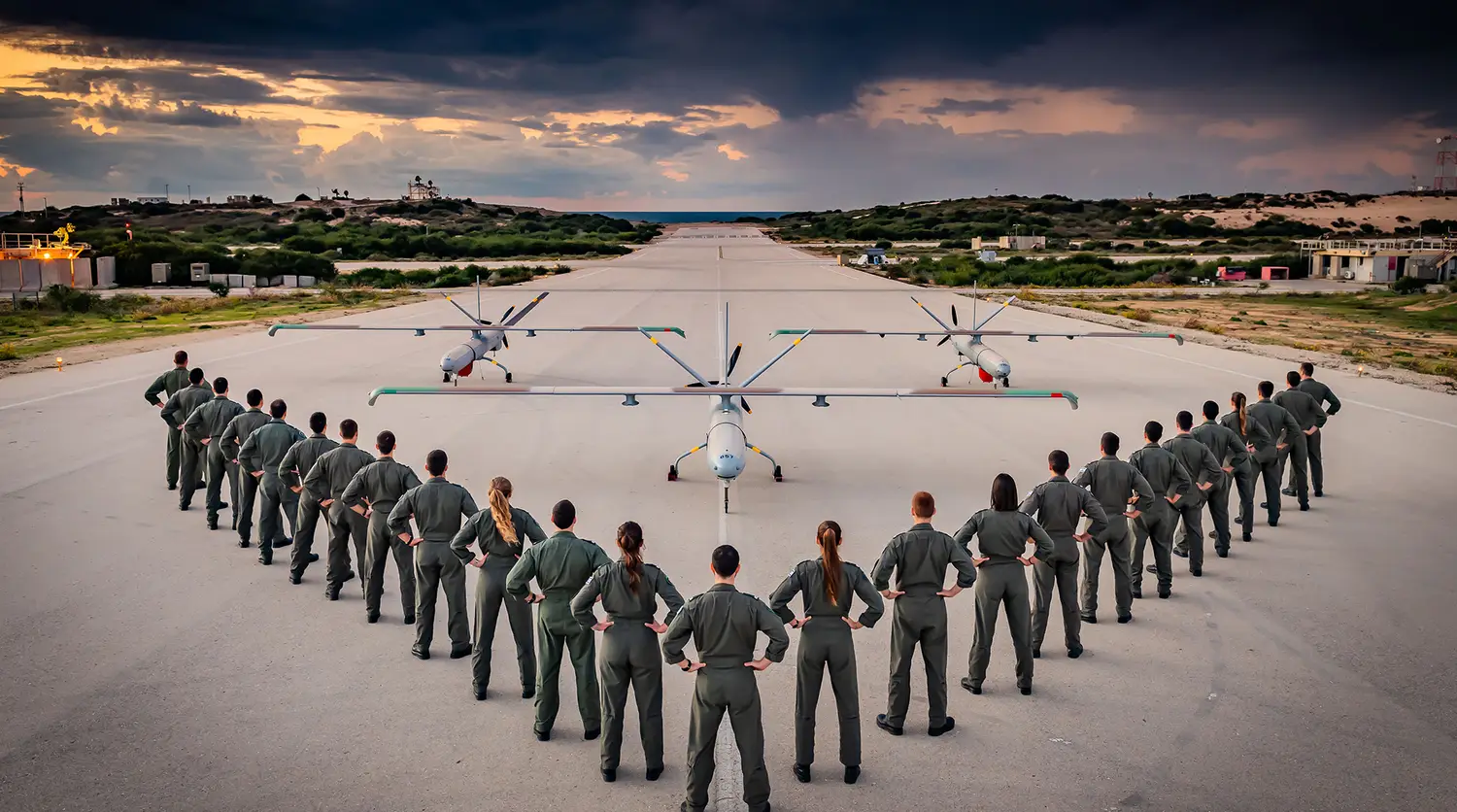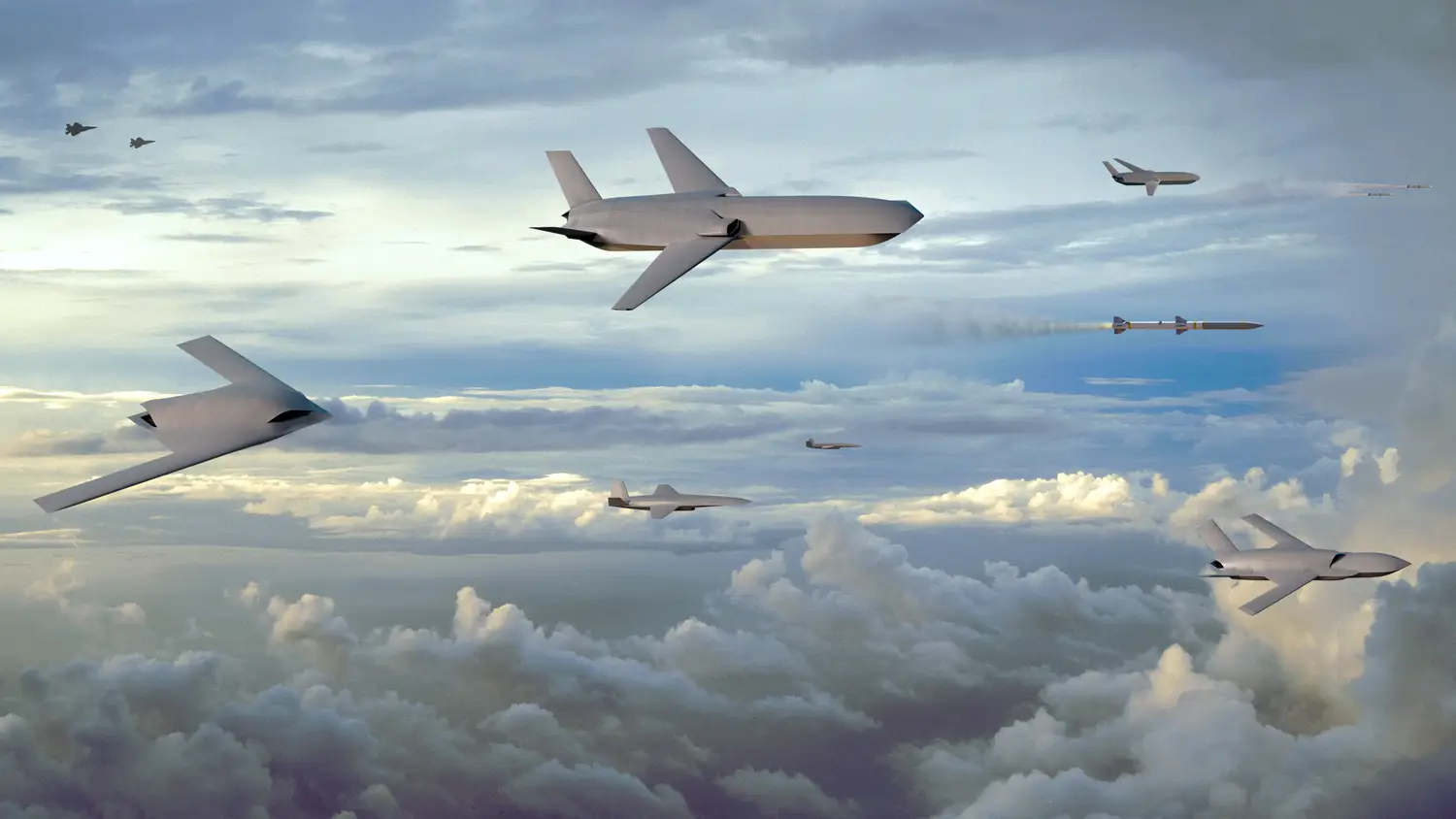
REPORT HOME > The bigger picture
june 2023 | technology report | UAS
As UAVs increasingly operate in a complex multi-domain battlespace, new communications and processing technologies are in the pipeline to help them realise their full potential for intelligence-gathering.
Above: The MUVE B330 Continuous Biological Detector and Collector from Teledyne FLIR Defense can be integrated with UAVs, providing the ability to communicate potential contamination to operators of assets in other domains. (Photo: Teledyne FLIR Defense)
As the US military and its allies prepare for an era of multi-domain operations (MDO) and Joint All-Domain Command and Control (JADC2), uncrewed aerial vehicles (UAVs) will be further embedded in wider networks to support intelligence, surveillance and reconnaissance (ISR) and a range of other roles.
UAVs already operate as ‘giant antennas in the sky’, said C Mark Brinkley, senior director for strategic communications and marketing at General Atomics Aeronautical Systems (GA-ASI) which produces a range of UAS, including the MQ-9A Reaper and its variants.
‘They can see all up and down the visual and infrared spectrum; they can hear all up and down the radio frequency spectrum, and they have modems and other systems that enable them to transmit as well,’ Brinkley said.
‘When you have compliant equipment elsewhere in your arsenal, you can build connections between two points – directly between two aircraft, or via satellite or another method – into a network.’
Brinkley noted that the company’s most sophisticated customers are building towards JADC2, and highlighted the contribution that a networked, long-persisting ISR aircraft could make to such a picture.
‘You can cover big areas – out at sea, for example, or anywhere over land. Or you can watch one important area for as long as you want. That is a world-changing capability.’
Brinkley said UAS use a variety of ways to network, which are increasing with time and technology development. However, he said it is important to note that in some ways, the goal is to actually reduce networking, in terms of how the UAS function.
‘Classically, these aircraft used line-of-sight radio signals for take-off and landing and satellite communications for much of their missions. That still will happen, but automatic take-off and landing means UAS don’t need the same kind of procedures as in the early days because they can handle everything themselves,’ he said.
‘So we can operate in more places, send these aircraft on unpredictable routes to complicate tracking and targeting for adversaries, and also make those operations simpler for human crews – all while using less networking than we once did.’
Staying Interconnected
Networking UAVs in the battlespace aims to enhance situational awareness through interconnected military assets, said Amir Bettesh, vice president of marketing and business development at the Elbit’s UAS – Airborne Division, manufacturer of a wide range of UAS.
‘With this network, we can gather real-time intelligence and big data from multiple unmanned systems simultaneously,’ Bettesh said. This can be overseen by control stations in a central C2 hub, he said, which monitor multiple UAS, rather than an individual system.
This data can then be shared with other units or C2 centres, he noted, meaning it can pass between different domains. ‘We can disseminate information to other decision-makers,’ Bettesh pointed out.
Networking could further advance in coming years through several expected technological developments, Bettesh said. First, artificial intelligence (AI) will support human analysts when it comes to analysing data.
Additionally, he pointed to the potential for network synergy, comparing ELINT information from one UAV with electro-optical data from another, for instance, on the same geographical waypoints. In addition, AI can support scanning and processing targets from large areas, he said, although ‘it is very hard for a human being to do, but the machine can do instant analysis’.
Above: Elbit Systems foresees a future where AI can scan, process and compare data from different networked UAS sensor feeds in a way not possible for human operators. (Photo: Elbit Systems)
Looking further forward, he said there could one day be greater direct integration between UAVs and other platforms, perhaps without the need for a C2 hub. One example would be identifying a missile launch and then providing laser designator targeting information to a fighter aircraft to destroy that launcher.
‘We don’t see it yet, but this interaction between unmanned platforms in the air, and others between manned and unmanned platforms, is I think the next step for networking in the battlespace.’
Efficient comms
While SATCOM and radio will remain key for networking into the future, laser communications are growing in importance, Brinkley said: ‘Lasers send data down the beam of light between two points, and because you’re not energising a radio signal in all directions in the RF spectrum, it’s impossible to intercept.’
AI and machine learning (ML) will play a growing role in the coming years, Brinkley added. However, these will be important not just in their own right, but in how they enable other, overlapping technologies, which in turn unlock new concepts of operation.
For example, Brinkley pointed to GA-ASI’s newest UAS, the Gambit Autonomous Collaborative Platform, which is designed to be heavily autonomous. The Gambit series will ‘fly themselves’, he added, and when they detect something – or some event occurs that they perceive – they can react based on how they have been instructed.
‘Crews won’t need to input stick and rudder commands the way they did in the old days with UAS, which required a live communications link. Now they won’t need one. That lets us go into areas even if an adversary is attempting to degrade communications there.’
Brinkley also pointed to how the MQ-9B SeaGuardian could interact with other military assets in future, using the example of two vessels in international waters that appear to be very close to one another; this could be rogue actors transferring oil from one ship to another in violation of sanctions.
‘MQ-9B detects that this is happening, knows it's suspicious, and calls it to the attention of a human operator. The pilots and crews of the aircraft, working from a ground control station, didn’t have to do anything – they didn’t even have to know the ships were there,’ he said.
‘Now if you’re the coast guard, or the navy, or another agency, you can fly closer, look at what’s happening, capture video, and do what you need to do, [including] send your own ships to interdict.’
Small but well-formed
Smaller UAS – those that belong in the Group 1 category of systems – will also play a crucial role in the JADC2 battlespace in the coming years. This is a focus for Teledyne FLIR Defense through its Black Hornet, R80D SkyRaider and SkyRanger R70 systems.
Steve Pedrotty, Teledyne FLIR’s director for US DoD programmes, said the capabilities of nano and other small UAS has expanded in recent years, meaning they can better support payloads such as comms, laser designators, electronic warfare (EW) packages and more. These expanded capabilities mean ‘we really do need to be hooked in’ to a wider network.
Dave Viens, the company’s VP – US business development, said this networking would increase interoperability with crewed platforms in other domains, allowing for detection, targeting and more. For example, he highlighted the company’s StormCaster-DX payload, a laser target designator that can be integrated with the R80.
‘We can use that to guide precision munitions from both airborne platforms and ground platforms, increasing that standoff [range] for the manned platform.’
He also pointed to the ability to integrate CBRN payloads like the company’s MUVE B330 Continuous Biological Detector and Collector with systems like the R80, with the ability to communicate a potential contamination to operators of assets in other domains.
Above: The Gambit Autonomous Collaborative Platform from GA-ASI is designed to operate with minimal human intervention. (Image: GA-ASI)
Pedrotty emphasised that networking has always been a vital focus of UAVs. ‘They don't do anything alone. They're operating in conjunction with either higher echelons or with the direct support of a unit that they're supporting. So the interaction becomes the question – where do they feed into JADC2?’ he said.
‘The bottom line is that even at the lowest possible node, a Group 1 UAS, the interaction and interoperability is critical, because it could have information that is strategic in nature for the theatre.’
UAS will be central in JADC2 because the US military and its allies will need to stand farther back from initial contact with high-tech adversaries, said Brinkley.
‘What you’re sending into the initial, close-contact encounter with potentially hostile units are unmanned systems,’ he noted. ‘Obviously, the most important factor here is protecting pilots and crews. If you’re going to have combat losses, you want those losses to be aircraft with no one on board.’
Brinkley referenced the Gambit, which is designed to travel in formations and collaborate to image and sense what is happening.
‘The human-crewed fighters and other aircraft can keep back, and then manage the engagement from a position of advantage,’ he said. ‘The goal in all of this is that American and allied crews don’t ever go into a fair fight – we want to give them early warning, decision advantage, and the ability to act decisively, first.’


